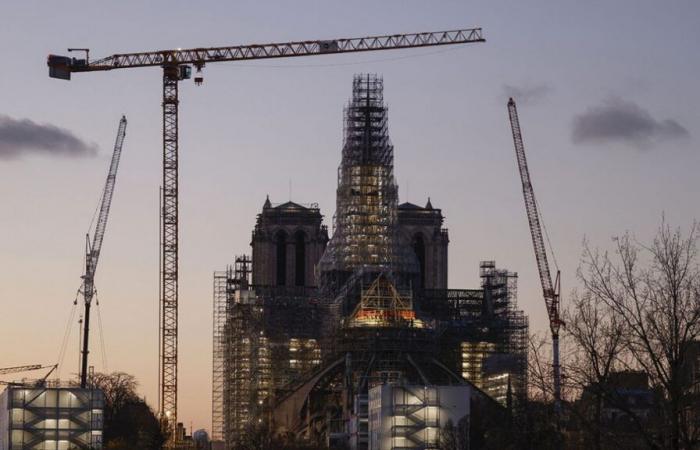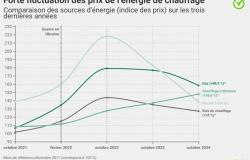
Notre-Dame de Paris, which will open on December 8, more than five years after a devastating fire, has been restored from top to bottom by nearly 2,000 people.
For the inhabitants of Paris, it’s almost the big day: on December 8, Notre-Dame de Paris will reopen its doors to the public. As a reminder, the monument was the victim of a violent fire, seriously damaging the building. Here are the main elements of the cathedral which were affected or spared by the flames.
What was destroyed
The most visible destruction is the emblematic signature of the monument: the spire of Viollet-le-Duc, which collapsed from a height of 93 meters.
The framework, known as “the forest”, a jewel of medieval architecture, was also devoured by the flames. Among the other notable destructions, the roof of the large attic, part of the vault, as well as the liturgical tray and the liturgical furniture of the 20th century or even the 20th century chairs located in the nave.
What was damaged
The old rooster, installed in 1859 and restored in 1935, was found dented but intact among the rubble. The three gables – north, south and west – as well as their sculpted decorations were damaged, as was part of the north belfry. Two of the eight bells it houses were renovated after suffering from the heat.
Also damaged were five large chimeras by Eugène Viollet-le-Duc from the south tower, the cross of the apse, the only element of the choir roof to have survived the flames, the floor of the nave, the two arms of the transept, as well as the choir organ.
What was saved or spared
The relics, the most emblematic of which are the crown of thorns, the relic of the nail and the wood of the cross, were saved, evacuated in a previously established order of priority. The sacred objects of the “treasure”, kept in the sacristy, are also unharmed.
The Virgin and Child, or Virgin of the Pillar, was found intact in the middle of the rubble, but covered in lead dust, just like the largest organ in France that the cathedral houses. It was cleaned, its 8,000 pipes reassembled and harmonized.
The large choir carpet suffered neither the flames nor the water poured by the firefighters, because it was only taken out of storage and used on rare occasions.
The spire statues, comprising the twelve apostles and four monumental evangelists that adorned the roof of Notre-Dame, narrowly escaped the fire, as they had been removed days earlier for restoration.
The large roses on the north, south and west facades as well as the stained glass windows were saved.
The 13 “Mays”, large paintings from the 17th and 18th centuries offered by the corporation of Parisian goldsmiths were also spared, as was the drone, the largest bell of Notre-Dame in the south tower which was not reached by the flames.
Also saved, the monumental Pietà by the sculptor Nicolas Costou, the golden wrought iron grilles of the choir and the choir stalls.
What will be new
The cathedral has been equipped with a redesigned fire-fighting system, including a water misting system in the frames, two fire-resistant bays and thermal cameras. The presbytery now houses a security PC and a fire surveillance PC. Thanks to the cleaning of the walls, vaults and decorations, Notre-Dame benefits from a new luminosity.
The cathedral will reopen, equipped with new liturgical furniture, massive and sober, in brown bronze, as well as 1,500 solid oak chairs with an openwork design.
A new layout of the chapels will constitute a pilgrimage route. A second sealed tube, containing the names of those who participated in the reconstruction of the cathedral, was placed in the new rooster.
By 2026, contemporary stained glass windows desired by Emmanuel Macron must replace five of the six bays on the south aisle of Notre-Dame (Seine side), created in the 19th century by Viollet-Le-Duc. These stained glass windows, like the others, were not damaged by the fire, but are very dirty.
Notre-Dame de Paris Paris France





